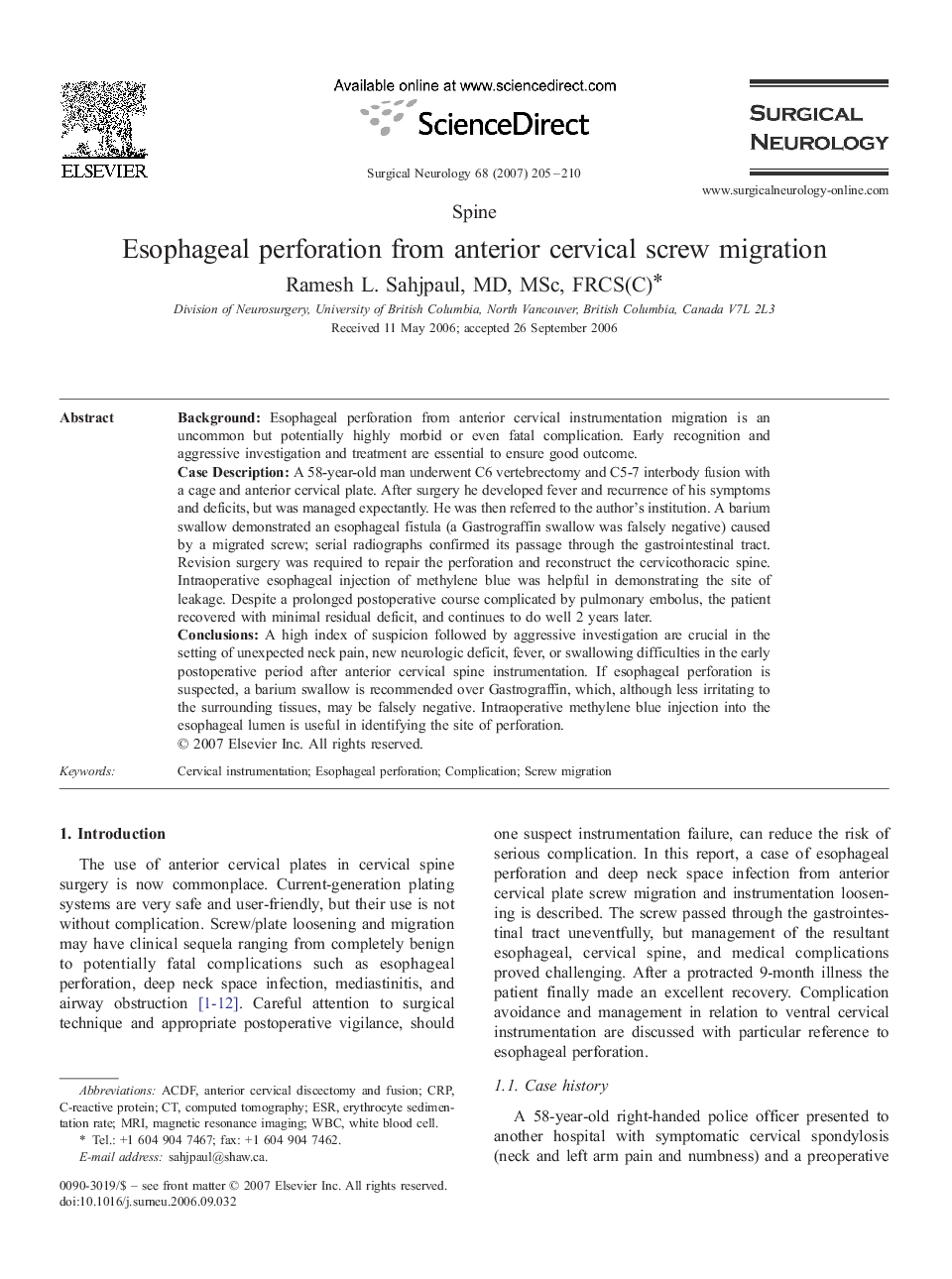| Article ID | Journal | Published Year | Pages | File Type |
|---|---|---|---|---|
| 3093532 | Surgical Neurology | 2007 | 5 Pages |
BackgroundEsophageal perforation from anterior cervical instrumentation migration is an uncommon but potentially highly morbid or even fatal complication. Early recognition and aggressive investigation and treatment are essential to ensure good outcome.Case DescriptionA 58-year-old man underwent C6 vertebrectomy and C5-7 interbody fusion with a cage and anterior cervical plate. After surgery he developed fever and recurrence of his symptoms and deficits, but was managed expectantly. He was then referred to the author's institution. A barium swallow demonstrated an esophageal fistula (a Gastrograffin swallow was falsely negative) caused by a migrated screw; serial radiographs confirmed its passage through the gastrointestinal tract. Revision surgery was required to repair the perforation and reconstruct the cervicothoracic spine. Intraoperative esophageal injection of methylene blue was helpful in demonstrating the site of leakage. Despite a prolonged postoperative course complicated by pulmonary embolus, the patient recovered with minimal residual deficit, and continues to do well 2 years later.ConclusionsA high index of suspicion followed by aggressive investigation are crucial in the setting of unexpected neck pain, new neurologic deficit, fever, or swallowing difficulties in the early postoperative period after anterior cervical spine instrumentation. If esophageal perforation is suspected, a barium swallow is recommended over Gastrograffin, which, although less irritating to the surrounding tissues, may be falsely negative. Intraoperative methylene blue injection into the esophageal lumen is useful in identifying the site of perforation.
